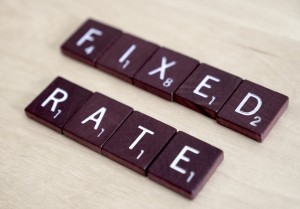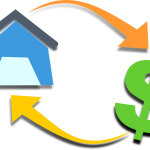Fixed-rate home loan or a floating rate mortgage, what’s best for you depends on your own unique circumstance
If you’re planning on a new home purchase, refinance your current one or take out a second mortgage, you will have to decide between a fixed-rate mortgage and a floating rate mortgage. For the floating rate mortgage, it is a variable interest rate, currently still based on the Singapore Interbank Offered Rate (SIBOR) or Singapore Swap Offer Rate (SOR).
The SGD Singapore Interbank Offered Rate in three to four years, will be shifted to the use of the Singapore Overnight Rate Average (“SORA”) as the main interest rate benchmark for SGD financial markets. The MAS said that this shift will support the deepening of SORA markets, result in more transparent loan market pricing for borrowers, and more efficient risk management for lenders.
Fixed-rate home loan or a floating rate mortgage – which type is the best for a new home purchase?
Table of Contents
As the name implies, fixed-rate home loan are mortgages with an interest rate (and payment) that remains the same over time. With the fixed-rate home loan, you pay the same amount every month for the entire life of the loan, generally 1 to 5 years. There are currently no lenders that offer a perpetual fixed-rate home loan for the entire tenure.
In the beginning, the portion of your monthly payment going toward interest will be high, and the portion going toward principal payment will be low. The interest portion of the monthly payment tapers off over the term and the principal portion rises to compensate, but the total payment amount does not vary.
Payments over the total term of a floating rate mortgage for your new home purchase will vary by design.
The interest rate usually starts off low (thus the attraction), but it can later rise. If you opt for an floating rate, you will pay a fixed interest rate for a predetermined time period (usually three years or less), followed by periodic rate adjustments for the remainder of your loan’s term. This rate is normally a set number of points over a widely published rate, such as the Singapore Interbank Offered Rate, or Sibor. If that rate rises (or falls), so do your monthly payments.
There are many types of floating rate structures. They are: –
- Pegged to bank’s internal board rate. (i.e. Board Rate – Discount)
- Pegged to Sibor Rate. (i.e. Sibor + 1%)
- Pegged to SOR Rate. (i.e. SOR + 1%)
- Pegged to Fixed Home Rate (FHR)
- FHR12 – based on 12 months fixed deposit rates (i.e. FHR12 + 1%)
- FHR18 – based on 18 months fixed deposit rates (i.e. FHR18 + 1%)
- Pegged to Fixed Deposit Mortgage Rate (FDMR)
- FDMR36 – based on 36 months fixed deposit rates (i.e. FDMR36 + 1%)
- Pegged to Cost of Funds. (i.e. COF + 1%)
It is almost certain many more types of floating rate packages will be created in the future.
Mortgage Terminology – 6 things to know before taking Home Loan
The benefit of fixed-rate home loan is that are no surprises. Your initial payment on the home equals your final payment. For many borrowers, this provides peace of mind in an unpredictable economy. It also is a good strategy for new home purchase when rates are low but likely to rise.
On the flip side, the interest rate on fixed-rate mortgages is typically higher than an floating rate’s initial interest rate. If you expect to move or trade up in a few years, this means you will pay more than necessary for a short-term investment — money that you could have invested elsewhere or saved. You also would pay more over the long term if interest rates stayed low for an extended period or fell; though in the latter case, you could refinance.
 Fixed rate package are almost always more expensive than floating rate packages.
Fixed rate package are almost always more expensive than floating rate packages.
As banks are unsure of the future interest rate environment, they will need to enter into hedging contracts, which incur a fee, to guarantee you the future rates. It’s like buying an insurance policy against interest rates going crazy.
For example, if the current borrowing cost of the bank is 1.5%. The bank may then decide to create a fixed rate package that is 2% fixed for 3 years.
However, the bank does not know what will happen in year 2 and year 3. What if the cost of borrowing for the bank rises to 3% for year 2 and 3?
This would mean that the bank’s profit would be: –
- Year 1 = 2% – 1.5% (cost of funds) = 0.5%
- Year 2 = 2% – 3% (cost of funds) = -1%
- Year 3 = 2% – 3% (cost of funds) = -1%
- Total over 3 years = -1.5%
A bank is unlikely to create a product that has a risk of losing money. So banks typically pay a fee to go into a hedging contract.
The bank will buy a hedging product that would guarantee them 2% for year 2 and year 3 and maybe pay a fee of maybe 0.3% to do so. It is similar to insurance.
Hence the bank’s profit would be: –
- Year 1 = 2% – 1.5% (cost of funds) = 0.5%
- Year 2 = 2% – 1.5% Cost of funds + 0.3% Hedging cost = 0.2%
- Year 3 = 2% – 1.5% Cost of funds + 0.3% Hedging cost = 0.2%
- Total (over 3 years) = 0.9%
A guaranteed profit for each mortgage loan product is probably more important for the bank than the potential to make more money, but also open to the possibility to lose money.
Choosing between a fixed-rate mortgage and floating rate mortgage for your new home purchase is really a matter of current rates, your personal investment horizon and the economy. In addition to deciding whether you want to risk a rate hike, you also have to consider how long you plan to own the home, differences in closing costs and whether you will meet the qualifications for each type of loan.
Brought to you by https://www.icompareloan.com






